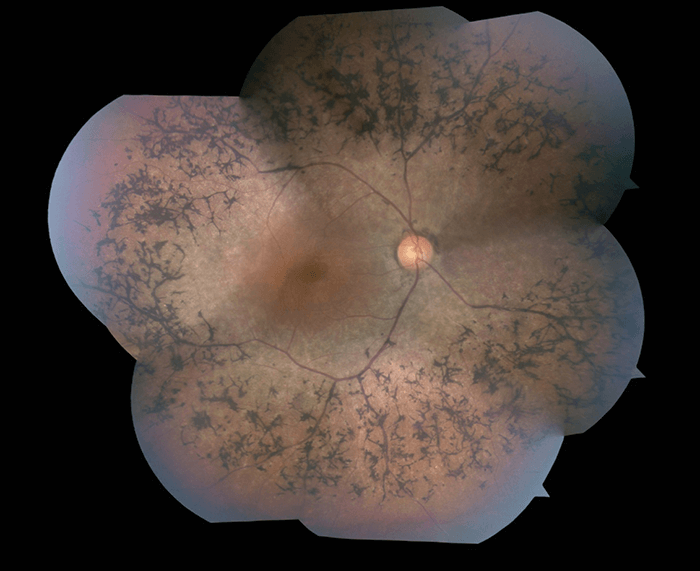
Retinitis pigmentosa (RP) comes in many forms. It can be inherited in autosomal dominant, autosomal recessive, X-linked and even maternally (mitochondrial) forms. When it’s combined with deafness, it’s called Usher syndrome; when the mitochondria are involved, it’s Kearns-Sayre syndrome; hypogonadism and developmental delay, it’s Bardet-Biedl syndrome. The list goes on, but the point is today, 64 genes have been identified that can cause RP when mutated. This poses a bit of a challenge when trying to take a genetic approach to treating it. But what if you could treat RP at a point downstream of these receptors, bypassing the entire problem?
Photoreceptors are among the most metabolically active cells in the body – they convert between 80–96 percent of glucose into lactic acid via aerobic glycolysis. Under normal conditions, the outer segments of photoreceptors are continuously regenerated in a process that requires NADPH from the pentose phosphate pathway (PPP) to generate phospholipids. Rods shuttle glucose into the PPP to synthesize new membranes and generate new outer segments. Now remember that in darkness, rods are continuously depolarized and have a phenomenal consumption of glucose – and one of the first manifestations of RP in people with the disease is dysgenesis of rod outer segments. All of this suggests that the cell death seen in RP (Figure 1) is a consequence of metabolic dysfunction. It was this that made a team of researchers from the US and China hypothesize that they might be able to rescue the degenerative phenotype by inhibiting a transcription factor gene called Sirt6, which acts as a repressor of glycolytic flux. To find out, they used a murine mouse model of severe RP: Pde6-/- mutant mice, which exhibit near complete photoreceptor loss by two months. Genetically disrupting Sirt6 resulted in rod cells remaining in a permanent state of glycolysis – and improved rod and cone health, with photoreceptors surviving in these mice far longer than in untreated control mice (although eventually, photoreceptor death still occurred). “Our study shows that precision metabolic reprogramming can improve the survival and function of affected rods and cones in at least one type of RP. Since many, if not most, forms of the disorder have the same metabolic error, precision reprogramming could conceivably be applied to a wide range of RP patients,” says Tsang. “Our next challenge is to figure out how to extend the therapeutic effect of Sirt6 inhibition,” he adds.
References
- L Zhang et al., “Reprogramming metabolism by targeting sirtuin 6 attenuates retinal degeneration”, J Clin Invest, [Epub ahead of print] (2016). PMID: 27841758.
